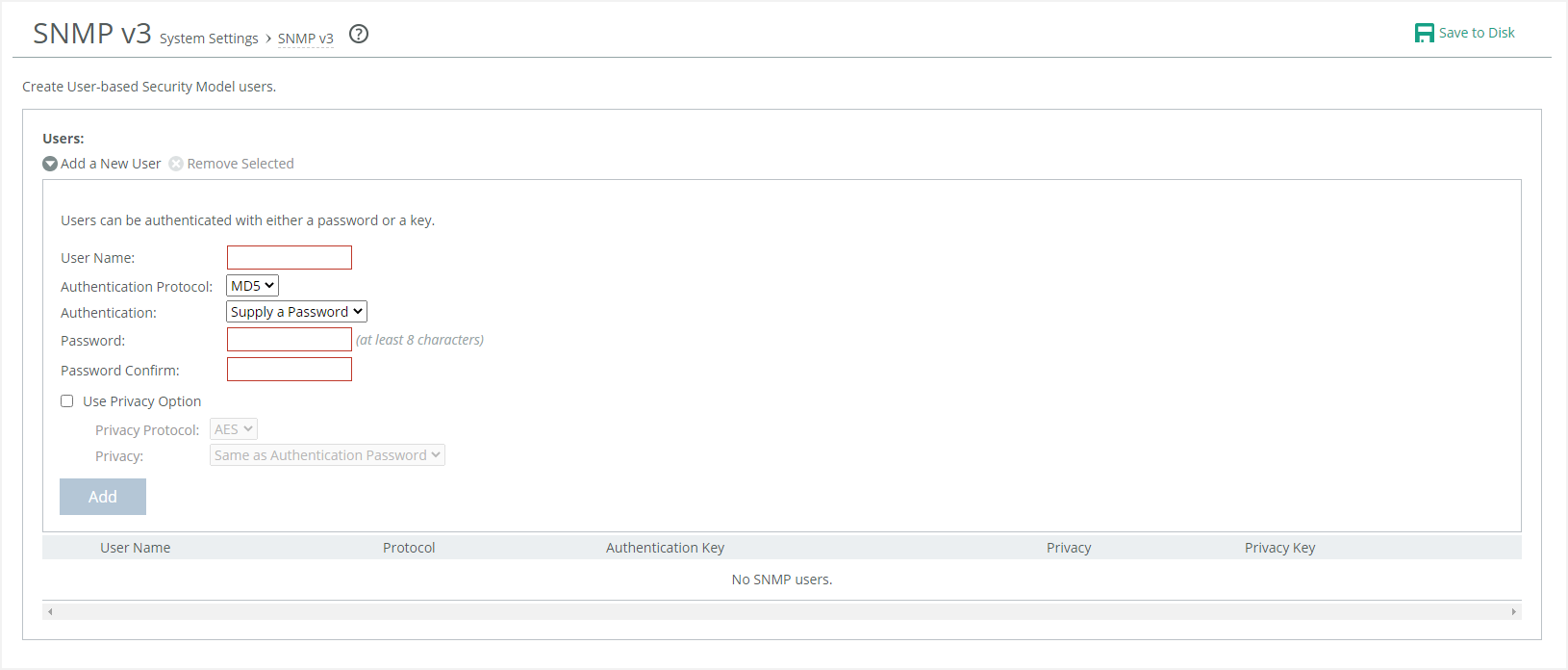About SNMPv3 user authentication
SNMP v3 settings are located on the Administration > System Settings: SNMP v3 page.
SNMP v3 page

SNMPv3 provides additional authentication and access control for message security. For example, you can verify the identity of the SNMP entity (manager or agent) sending the message. Client Accelerator Controller supports SNMPv3 message encryption for increased security. Using SNMPv3 is more secure than SNMPv1 or SNMPv2; however, it requires more configuration steps to provide the additional security features.
These settings are available:
• User name—A name for the user.
• Authentication protocol—Options are MD5 or SHA. The default is message-digest 5 (MD5), which is a widely used cryptographic hash function with a 128-bit hash value. Secure Hash Algorithm (SHA) is a set of related cryptographic hash functions, which provide better security but may be slower than MD5. SHA is considered to be the successor to MD5.
• Authentication—The user can authenticate using the specified password or key.
• Password/Password confirm—Passwords must have a minimum of eight characters.
• Use privacy option—Enables you to use AES or DES privacy protocols.
• Privacy protocol—Options are AES or DES.
• Privacy—You can choose to use the authentication settings, supply different password, or supply a different key to use while authenticating users. The default setting is Same as Authentication.
Configuring SNMP v3 users
1. Create the SNMP-server users. Users can be authenticated using either a password or a key.
2. Configure SNMP-server views to define which part of the SNMP MIB tree is visible.
3. Configure SNMP-server groups, which map users to views, enabling you to control who can view what SNMP information.
4. Configure the SNMP-server access policies that contain a set of rules defining access rights. Based on these rules, the entity decides how to process a given request.


